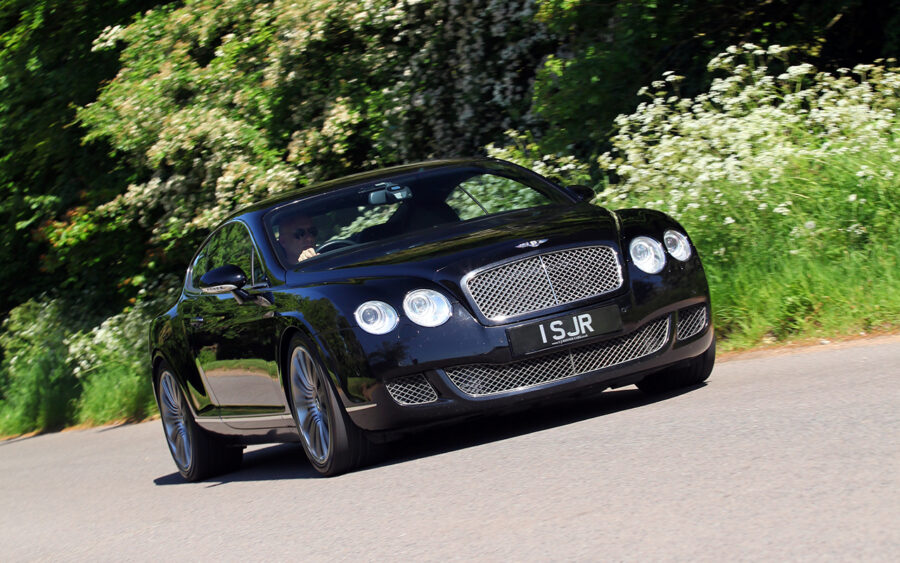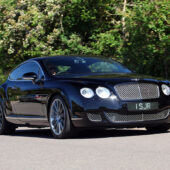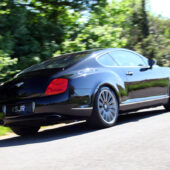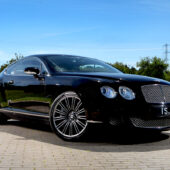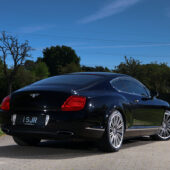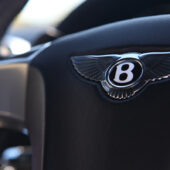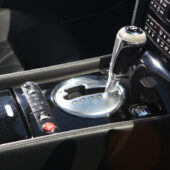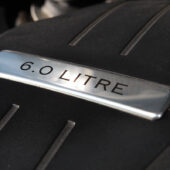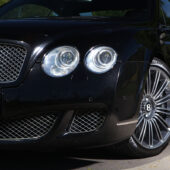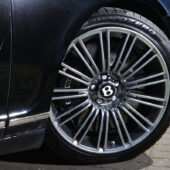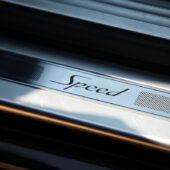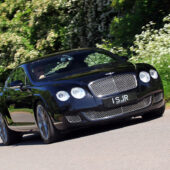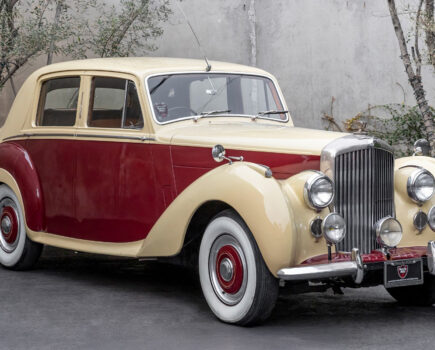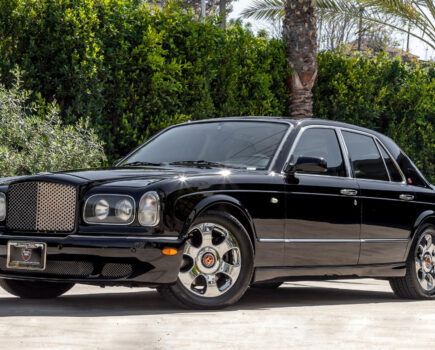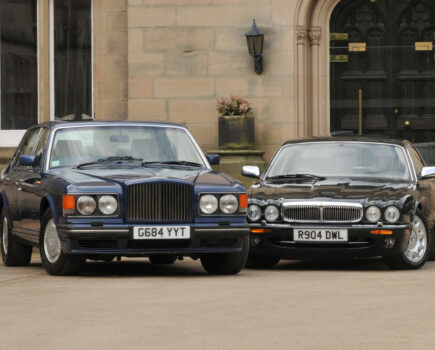The 2003-on Continental GT is firmly established as a modern classic – but does the extra power of the later GT Speed make it the better choice?
Words: Paul Guinness Images: Gerard Hugues
It’s impossible to overstate the importance to Bentley of the new-for-2003 Continental GT, a car that represented the start of a whole new era for the marque. The company had been under Volkswagen control for the best part of five years by then, resulting in extra investment at Crewe and further improvements to the four-door Arnage line-up. But what it really needed was a brand new sportster, the kind of car that combined 21st century technology with more than a hint of familiar Bentley style.
The last true Bentley coupé had been the bespoke Continental R range, unveiled in 1991 (when Rolls-Royce Motors was under Vickers control) and still hand-built to order once VW was in charge at Crewe. But the Continental GT of 2003 was set to be a very different product indeed – and even relatively affordable by Bentley standards, at just over £100,000. To put that into perspective, the outgoing Continental R was roughly twice the price.
Naturally, the Continental GT made full use of VW Group technology, hence its self-levelling air suspension, all-wheel drive and 6.0-litre (552bhp) W12 twin-turbocharged engine. Bentley traditionalists may have been appalled, but there were plenty of other potential buyers (many of them new to the marque) who thought differently – and that meant huge sales potential for the GT. The old Continental R had sold only around 250 units a year, while the GT went on to average around 4000 per annum during its lengthy production run. Indeed, this handsome, new-generation model was set to become the most successful Bentley of all time.
Even a launch as successful as that of the Continental GT can’t be relied upon indefinitely, however, hence Bentley’s decision to further develop the model during its early years. The Mulliner Driving Specification arrived in 2004, bringing bespoke wheels, two-tone leather and veneer combinations, drilled alloy pedals, quilted door and dashboard facings, plus optional piano-black dashboard veneer. But it was the 2008 model year that brought the most changes, with a minor facelift for the Continental GT seeing lighter aluminium suspension components that produced a minor improvement in ride quality, while new multi-mode variable-assistance steering injected some extra ‘feel’ at the wheel without sacrificing refinement. Biggest news, however, was the arrival of the GT Speed, with an engine tuned to 602bhp and a lower standard ride height, more powerful dampers and stronger anti-roll bars, as well as unique wheels and tyres, a bespoke steering set-up, stiffer suspension bushes and other performance-related enhancements.
The GT Speed’s role as the most powerful Continental didn’t last long, as by 2009 there was a Supersports derivative available, with a whopping 621bhp at its disposal. But that does nothing to detract from the Speed version’s role as the first of the higher-performance new-generation Bentley GTs – a derivative that’s now a tempting proposition for many a modern-classic enthusiast.

What makes this particular car even more interesting, however, is that its original owner ordered it with a plethora of extra-cost options. According to the vendor, Metallic Black Crystal paintwork added £2170 to the price, while carbon ceramic brakes came in at over £8500. The powered bootlid was £500, the rear view camera cost £638, and the enhanced tracking system came in at over £1000. Add in the 20-inch multi-spoke alloys, Mulliner alloy fuel filler, lumbar massage front seats and other niceties, and you have an options list in excess of £15,000 – taking the cost of the car when new to well in excess of £152,000. By any standards, that was a heck of a lot of money.
It was the kind of outlay that makes today’s sub-£30,000 price tag seem almost bargain-like, but naturally there is a catch. While the GT Speed’s hefty depreciation means many of us could stretch to buying one in 2020, there’s no point even contemplating the idea unless you have sufficient funds to properly maintain it. This two-owner Bentley has covered just shy of 73,000 miles and comes with a comprehensive service history, with nine of the twelve services to date being of the ‘main dealer’ variety and the remaining three by independent marque specialists. This is, of course, crucial when buying, as it adds a certain peace of mind as to how the car’s been looked after.
Let’s not forget, however, that a major service on even a standard Continental GT can set you back in excess of £2500, which means little chance of running one on a tight budget. Add in this GT Speed’s extra feature of carbon ceramic brakes (notoriously expensive to replace, should they ever need it) and you have even more potential outlay up ahead… and that’s before you begin to factor in the kind of regular consumables that every car needs. After all, there are many folk out there who spend less buying a secondhand family saloon than you might expect to pay for a set of quality tyres for a Continental GT.
These are not cheap cars to run. While the mainstream motoring press loves nothing more than a headline screaming how you can “Buy a Bentley for the Price of a Fiesta!”, most marque enthusiasts reading this will know that acquiring the car is just the start of the story – and that running costs are likely to be expensive. It’s a simple fact of upmarket motoring life.
On the other hand, assuming you have sufficient left in your budget to maintain a Continental GT in the manner to which it should be accustomed, which means adhering strictly to the service intervals and entrusting your car to a knowledgeable specialist, then the sums can stack up. This one has already lost 80% of its original price, so any future deprecation is likely to be quite minimal. And that alone means one of motoring’s biggest costs is suddenly brought under control.

First impressions of this particular GT Speed are very positive, with the original Black Crystal paintwork still being in fine fettle (apart from the inevitable tiny stone chips on the vulnerable front end), with an almost metalflake effect from some angles on the brilliantly sunny day of our recent photo shoot. The car’s Beluga Black leather interior is equally well preserved and is obviously ‘fully loaded’, featuring the GT’s usual climate control, cruise control, electrically adjustable (and heated) seats, tyre pressure control and much more.
The seating position will be familiar to anyone who has driven a standard-spec Continental, as will the overall cabin and ergonomically successful dashboard layout – one that still looks reasonably contemporary to this day. But how does this high-powered flagship of 2008 perform twelve years after its debut? To find out, we took to a range of different roads in and around Worcestershire, putting the GT Speed through its paces on everything from straight-line dual carriageways to entertainingly twisty A-roads – and, of course, it behaved admirably.
When creating the GT Speed, Bentley didn’t just add extra turbo boost, as that would have played havoc with the torque curve. Instead there were new pistons, con-rods, improved crankcase breathing and a new engine management system, as well as a tiny rise in boost from 0.6-bar to a still-very-light-pressure 0.7-bar. The standard GT’s 9.0:1 compression ratio was retained, with the real improvement being in the GT Speed’s peak torque – with the astonishing new figure of 553lb.ft. being achieved from as little as 1750rpm. The end result is awe-inspiring mid-range acceleration, making for safer overtaking and the kind of driver thrills normally reserved for supercar buyers.
When new, the 602bhp GT Speed offered a top speed of 202mph (making it the fastest production Bentley at that time) and a 0-60mph time of just 4.3 seconds (just under half a second quicker than the standard GT), and all these years later it feels scarcely any less rapid. Standing-start acceleration still impresses, and not just in terms of the car’s pace; the lack of drama is also a revelation, with the GT’s superb all-wheel drive set-up providing instant ‘oomph’ with no wheel spin, torque steer or other impediments. On the right kind of twisting A-road, meanwhile, the GT Speed’s uprated and stiffened suspension helps to provide roll-free cornering to complement its immense grip, allowing the experienced driver to make seriously rapid cross-country progress with confidence.
Not that you need to be an expert driver in order to successfully pilot a GT Speed, of course. Like any 2003-on Continental, this high-performance behemoth is capable of being driven sedately and safely by just about anyone, with an ease of operation that will please the less enthusiastic driver. The car’s super-smooth six-speed automatic transmission adds to the simplicity, with no need to use the wheel-mounted gearchange ‘paddles’ if you’re not that way inclined. And, of course, the abundance of grip and drama-free handling both help to instil a feeling of self-assurance.
Inevitably, anyone who buys a GT Speed now is likely to be an enthusiast – and yet, after a day with this particularly pleasing survivor, I can’t help pondering what it offers over the standard version. The easy answer is extra power and torque; but on today’s modern-classic market, are many buyers likely to notice the GT Speed’s relatively marginal performance advantage in real-world conditions? I’m not convinced; but then, I guess there will always be Continental GT buyers for whom only a flagship version will do.

